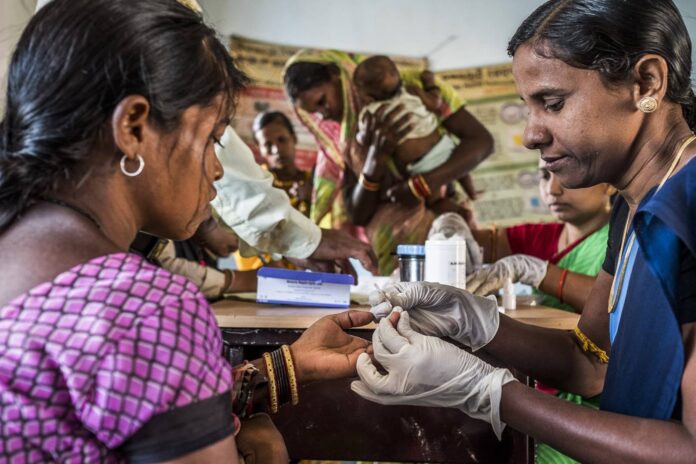
New Delhi, December 8, 2022: The World Health Organization (WHO) has launched the 2022 edition of its annual World Malaria Report, emphasizing the cumulative impacts the prolonged pandemic continued to weigh on the economies and health systems of malaria-endemic countries across the globe. As per the report, there were an estimated 247 million malaria cases recorded in 2021 in 84 malaria endemic countries. However, the rate of increase in malaria cases was slower than that observed between 2019-2020, when the spike in the rate was associated with the sudden disruptions to health service delivery brought on by the pandemic. The report states that the case incidence remained largely similar in 2020 and 2021. The WHO African Region continued to account for the largest burden globally, with 4 nations in the region responsible for over half of all malaria deaths.
Over the past 2 decades, the WHO South-East Asia Region displayed a reducing trend in both the malaria cases and associated deaths – cases reduced by 76%, from 22.8 million in 2000 to about 5.4 million in 2021. As per the report, the WHO South-East Asia Region accounted for about 2% of the burden of malaria cases globally, out of which, India was responsible for 79% of cases. The death associated with malaria remained largely similar over the past 3 years, with India accounting for 82.4% of all malaria deaths in the WHO South-East Asia Region in 2021. Positively, India is among the 5 HBHI nations to showcase showed a decline in deaths, although their contributions to the malaria burden within HBHI countries is still substantial.
“Following a marked increase in malaria cases and deaths in the first year of the COVID-19 pandemic, malaria-affected countries redoubled their efforts and were able to mitigate the worst impacts of Covid-related disruptions to malaria services,” said Dr Tedros Adhanom Ghebreyesus, WHO Director-General. “We face many challenges, but there are many reasons for hope. By strengthening the response, understanding and mitigating the risks, building resilience and accelerating research, there is every reason to dream of a malaria-free future.” The WHO report mentioned the remarkable progress toward malaria elimination; in 2021 there were 84 malaria-endemic countries compared to 108 in 2000.
The report continued to highlight the stark difference between WHO estimates of India’s malaria burden – approximately 4.3 million – and official reported figures as per government data – approximately 160,000. Commenting on the same, Mr. Pratik Kumar, Country Director, Malaria No More India stated, “WHO estimates likely differ from official government figures on account of the majority of cases being diagnosed and treated in the private health sector. Identifying and integrating mechanisms to enforce the notifiable status of malaria and include data from private health sector is imminent to assess the true disease burden of our country. Estimating the true disease burden is one of the most fundamental steps that needs to be taken to fulfil our nation’s ambitious goal and achieve our Honorable Prime Minister’s vision of a malaria free country by 2030.”
The report showcased the impact on resources due to the shortfall of the Seventh Replenishment of the Global Fund to Fight AIDS, Tuberculosis and Malaria and emphasized the greater need to maximize efficient, effective, and equitable use of malaria other health system resources globally.
Important Announcement – EasyShiksha has now started Online Internship Program “Ab India Sikhega Ghar Se”
Recommendation for elimination strategies stated in the report included “mass” strategies that can be applied to the entire population of a delimited geographical area, whether it be a village, township, or district; “targeted” strategies applied to people at greater risk of infection than the general population; and “reactive” strategies triggered in response to individual cases. The report also highlighted that planned urbanization could help in reducing malaria transmission, owing to which WHO along with United Nations Human Settlements Programme (UN-Habitat) launched the Global framework for the response to malaria in urban areas, targeted at policymakers and relevant stakeholders.
Progress towards malaria elimination is increasing. Despite disruptions during the COVID-19 pandemic, 61.5% of E-2025 countries reporting cases continued making progress towards elimination and reduction of the malaria burden. Realizing the need to address the disease in the region, Malaria No More India calls organizations and stakeholders to work together to advance innovations to contribute to India’s malaria elimination journey.
Also Read: Vision Empower celebrates Inclusion on the International Day of Persons with Disabilities
About Malaria No More:
Malaria No More (MNM) envisions a world where no one dies from a mosquito bite. To support India’s historic drive to eliminate malaria by 2030, MNM India is working with partners at the national level to mobilize the necessary political will, funding, and innovation. MNM India’s Strategic Support Unit also works at the state level, providing technical management support to the malaria programme in Odisha, once India’s state with the highest burden of malaria.
Visit EasyShiksha for skill development





































































